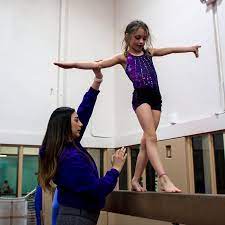Children have a boundless energy that often feels impossible to contain. If yours is climbing furniture, flipping over couches or turning your hallway into a racetrack, there’s a good chance they’d thrive in a structured, physical outlet—like gymnastics. But with so many programs available, how do you know which one is right?
Here’s your practical, no-fuss guide to choosing a gymnastics program that matches your child’s age, interests, and personality—without the jargon.
Why Gymnastics for Kids Is More Than Just Fun
Before diving into the selection process, it’s worth understanding what gymnastics can do for a child. Beyond the obvious flips and cartwheels, gymnastics builds strength, flexibility, discipline and coordination. It sharpens listening skills, boosts self-confidence, and creates a solid base for other sports.
It’s also one of the rare activities that welcomes kids of all skill levels and backgrounds. Whether your child is shy or full of flair, gymnastics creates space for both.
Research even links early movement-based learning with improved cognitive development. Learn more about the link between physical activity and academic performance from Raising Children Network, Australia’s top parenting resource.
What to Look for in a Kids’ Gymnastics Program
Not every gymnastics program is created equal. Some focus heavily on competition, others offer relaxed recreational sessions. What you choose depends on your child’s personality and long-term goals.
Here are the essentials:
Age-Appropriate Classes
Programs should be grouped by age and developmental stage. A 4-year-old doesn’t need a full routine on the balance beam—they need to learn how to roll, jump and listen to instructions in a fun, engaging way.
Look for a clear breakdown of age groups. For example, kindergym (ages 2–5) should emphasise play and basic movement, while junior programs (6–10) begin teaching technique through structured lessons.
Qualified Instructors Who Actually Like Kids
Accreditation is great—but does the coach know how to get a giggling five-year-old to follow directions? Passion and patience are just as important as technical knowledge. Ask about instructor backgrounds, child safety protocols and how they manage group behaviour.
Class Size and Safety
Smaller class sizes mean more one-on-one time. That matters when kids are learning skills like tumbling or bar swings. Equipment should be clean, soft-padded, and spaced out well.
Don’t be afraid to watch a class before enrolling. Do the kids look engaged? Are there enough mats? Is there clear supervision?
Matching Program Styles With Your Child’s Personality
Think about your child’s temperament. Are they:
- Energetic and fearless? A program with lots of tumbling, vault and trampoline work might suit.
- Focused and precise? Artistic gymnastics or rhythmic classes (especially for girls who enjoy dance) might appeal more.
- Shy or reserved? Look for programs that gently introduce new skills and encourage teamwork without pushing competition.
You can always adjust. The best gymnastics for kids is one that keeps them coming back with a smile.
How Many Days a Week Is Too Many?
More isn’t always better. Especially for beginners, one to two sessions per week is plenty. It gives them time to rest, process what they’ve learned, and avoid burnout.
If your child later expresses interest in going competitive or joining a performance squad, great. But there’s no need to rush. Let them lead the pace.
Watch Out for Red Flags
A few things should give you pause when evaluating gymnastics programs:
- Lack of clear communication from coaches
- No visible safety standards
- Overemphasis on competition for very young kids
- Crowded classes with no individual attention
- Frequent injuries with little explanation
If you see these, trust your gut and look elsewhere.
The Role of Community and Variety
Some centres offer cross-training options—like gymnastics for kids alongside swimming, ball sports or martial arts. This variety can be great for active kids who like to try different things and helps prevent overuse injuries.
Bonus? It keeps the weekly routine exciting. When a child is exposed to multiple sports early, they’re more likely to stick with physical activity long-term.
Plus, being part of a broader community facility means your child might eventually graduate to other programs, such as teen fitness, basketball, or even adult indoor cricket. That sense of belonging grows over time—and helps children build friendships outside of school.
Choosing for Value, Not Just Cost
Gymnastics isn’t always cheap. Between term fees, uniforms and special events, costs can add up. But don’t base your decision on price alone.
Instead, consider value:
- How much individual support does your child get?
- Do the sessions build actual skills, or is it just free play?
- Is the environment encouraging and safe?
A slightly higher-priced program with experienced coaches and structured progression often delivers better long-term outcomes than a cheaper, unstructured alternative.
A Pathway Into Lifelong Fitness
Choosing a program that fosters enjoyment and growth builds more than gymnastics skills. It creates the foundation for a physically active lifestyle.
Some kids may stick with gymnastics, others might transition to dance, soccer or even indoor sports like gymnastics for kids. No matter where they land, the agility, body awareness and confidence they gain will serve them well.
And who knows? Your child might even discover a passion for something unexpected—like tape ball cricket, a fast, social sport that shares the same spirit of movement, coordination and community as gymnastics.
Wrap-Up: Start Simple, Stay Consistent
There’s no one-size-fits-all when it comes to choosing a gymnastics program. The best approach is to start simple, stay consistent, and make sure your child is enjoying themselves.
If they’re excited to go each week, that’s your biggest sign you’ve made the right choice.
And as they grow, you can explore related sports—like gymnastics for kids—that keep them active, challenged and connected.

